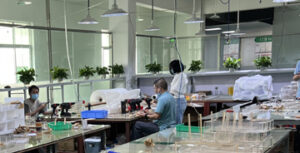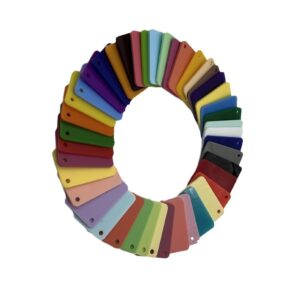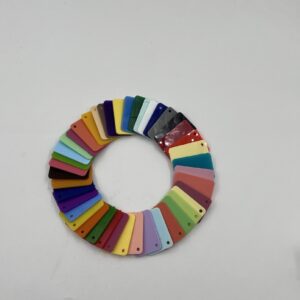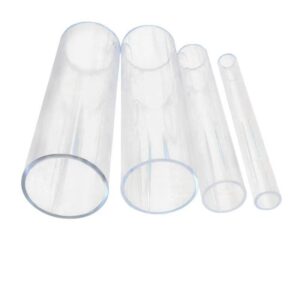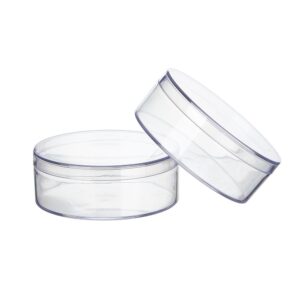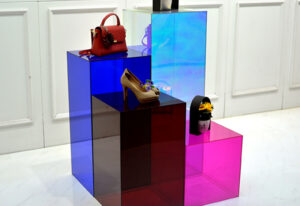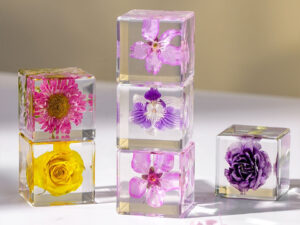Summary
Acrylic coffee tables and accent pieces represent a dynamic and contemporary trend in interior design, distinguished by their blend of functionality and aesthetic appeal. Originating in the mid-20th century, acrylic furniture gained prominence due to its unique characteristics, such as transparency, durability, and versatility, which make it a favored choice among modern homeowners and designers alike. This trend reflects a broader shift towards minimalism and open space concepts, where lightweight and visually unobtrusive furniture enhances room aesthetics without overwhelming existing decor. Notably, acrylic coffee tables have evolved through various design movements, particularly during the mid-century modern era when influential designers like Charles and Ray Eames utilized the material to create innovative and iconic pieces. The resurgence of acrylic furniture in recent years can be attributed to changing consumer preferences for sustainable and multifunctional designs, as well as advancements in production techniques that allow for greater creativity and customization. This revival has prompted a range of styles, from sleek and minimalist forms to playful and artistic interpretations, catering to diverse tastes and interior themes. Despite their popularity, the use of acrylic furniture does raise environmental concerns, particularly regarding the material’s lifecycle and recyclability. While acrylic offers durability and ease of maintenance, it is less biodegradable than traditional materials like wood or glass. As consumers increasingly prioritize sustainability in their decor choices, the debate over the environmental impact of acrylic versus more eco-friendly alternatives continues to be a prominent topic within the design community. In conclusion, trendy acrylic coffee tables and accent pieces not only enhance modern interiors with their stylish and practical designs but also invite ongoing discussions about sustainability and the future of furniture design. The exploration of mixed materials and innovative techniques further enriches this category, ensuring its relevance in contemporary home decor.
Table of Contents
History
The evolution of acrylic furniture, particularly in the context of coffee tables and accent pieces, can be traced back to the 1950s when the material gained popularity in various industrial applications and advertising signage. Acrylic, or polymethyl methacrylate (PMMA), is a versatile plastic that is prized for its clarity, strength, and ability to be molded into various shapes. This material emerged in the early 20th century, with significant advancements in its production and application occurring during and after World War II, when demand surged for lightweight, durable materials in military contexts such as aircraft components.
Early Origins of Coffee Tables
The history of the coffee table itself spans several centuries, with early forms possibly influenced by the tea tables of the 18th century in England. By the mid-17th century, coffee tables began to take shape, coinciding with the establishment of the first coffee houses in London in 1652, where social gatherings fostered the need for functional yet stylish furnishings.
Modern Design Movements
The introduction of acrylic into furniture design marked a significant shift in aesthetics and functionality during the 20th century. The modern coffee table, as we know it, emerged in the 1920s and 1930s, prominently featuring innovative designs by artists and craftsmen who embraced new materials and manufacturing techniques. Designers like Émile-Jacques Ruhlmann and Donald Deskey were instrumental in this movement, incorporating materials like metal and glass alongside acrylic to create pieces that were both functional and aesthetically pleasing. During the mid-20th century, the mid-century modern movement further propelled the popularity of acrylic furniture, with iconic designers such as Charles and Ray Eames leveraging the material’s properties to produce groundbreaking designs that combined form and function. The use of acrylic allowed for streamlined designs that complemented the minimalist aesthetic of the era, making coffee tables and accent pieces more accessible to a broader audience.
Contemporary Trends
In recent years, the appeal of acrylic furniture has surged, driven by trends favoring transparency and lightness in interior design. This resurgence reflects a broader shift towards creating open, airy spaces, where acrylic coffee tables serve not only as functional pieces but also as decorative elements that enhance the overall ambiance of a room. As the technology behind acrylic continues to evolve, so too does the creativity in its application, with contemporary designers pushing the boundaries of what is possible with this remarkable material.
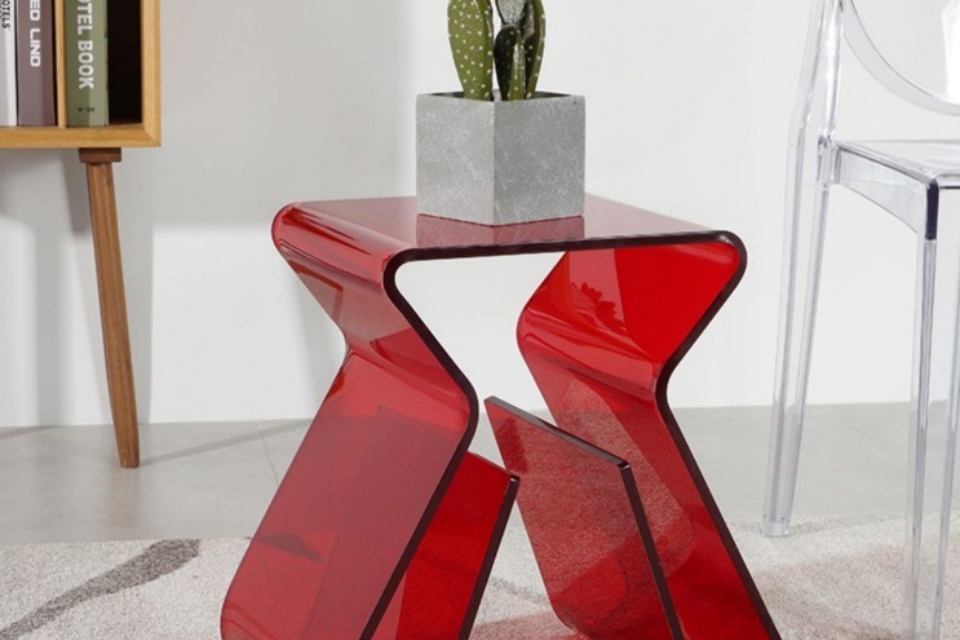
Characteristics of Acrylic Furniture
Acrylic furniture is renowned for its distinctive qualities, making it a popular choice in modern interior design. The primary material used is acrylic resin, also known as polymethyl methacrylate (PMMA), which is often referred to as “lucite” or “plexiglass.” This material offers several key characteristics that enhance both the aesthetic and functional appeal of furniture pieces.
Durability and Maintenance
Durability is a significant advantage of acrylic furniture. Acrylic is highly resistant to impact and scratches, making it less prone to chipping or cracking compared to glass. While it can be susceptible to scratches, minor marks can often be buffed out, extending the longevity of the furniture. Additionally, acrylic is lighter than glass, which can make it easier to move and rearrange. Maintenance is straightforward, typically requiring just a microfiber cloth and water to keep surfaces clean, which is especially beneficial in busy households.
Versatility in Design
The versatility of acrylic allows it to be molded into various shapes and designs, catering to a wide range of tastes and functional needs. This adaptability enables designers to create unique and modern pieces that can serve multiple purposes, from accent tables to statement furniture items.
Transparency and Aesthetic Appeal
One of the most striking features of acrylic furniture is its exceptional transparency. The crystal-clear quality of acrylic allows light to flow freely, creating an airy and open atmosphere in any space. This transparency enables acrylic pieces to blend seamlessly into various design styles, from minimalist and industrial to bohemian, without overpowering existing decor. The smooth, glossy finish of acrylic also contributes to its elegant appearance, making it a favored option for contemporary settings.
Chemical Resistance
Acrylic also boasts excellent resistance to a variety of chemicals, including solutions of inorganic alkalis and acids, which adds to its durability in environments where spills and stains may occur. This characteristic makes it a practical choice for furniture used in kitchens or areas with high traffic.
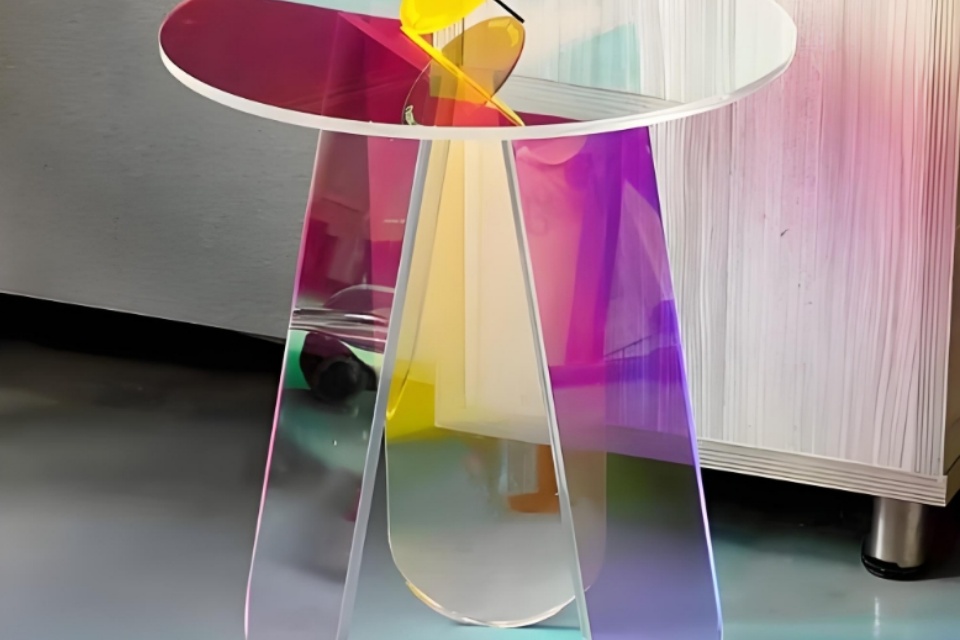
Types of Acrylic Coffee Tables
Acrylic coffee tables come in various designs and styles, making them versatile options for different interior aesthetics. These tables are not only functional but also serve as striking decorative elements in living spaces.
Common Designs
Waterfall Style
One of the most recognizable forms of acrylic coffee tables is the waterfall design, characterized by its smooth, continuous lines that create a flowing effect. This style works well in narrow spaces, providing a chic look without overwhelming the area.
Nested Tables
Nested coffee tables have gained popularity as a top trend for 2023. These tables feature multiple tiers that can be stacked or separated, allowing for flexible surface area depending on the occasion. They are particularly useful in smaller spaces where maximizing functionality is essential.
Square and Rectangular Shapes
Square and rectangular acrylic tables are commonly used to bridge gaps between seating arrangements in larger living spaces. By combining two or more tables, one can create a larger surface while maintaining a light, airy appearance. These shapes also work well in various configurations, enhancing both utility and style.
Round Coffee Tables
Round acrylic coffee tables soften the lines of angular living rooms and encourage conversation by eliminating sharp corners. They are ideal for use in spaces with curved furniture, as their shape promotes a more inviting atmosphere.
Specialty Designs
Ottoman Coffee Tables
Some acrylic coffee tables double as ottomans, providing both storage and additional seating. These multifunctional pieces often feature luxe accents and intricate details, making them a standout addition to any décor.
Multi-Functional Designs
In addition to standard coffee tables, some acrylic models include hidden compartments or shelves, adding extra functionality without compromising style. These designs can accommodate various needs, from serving snacks to organizing books and remote controls.
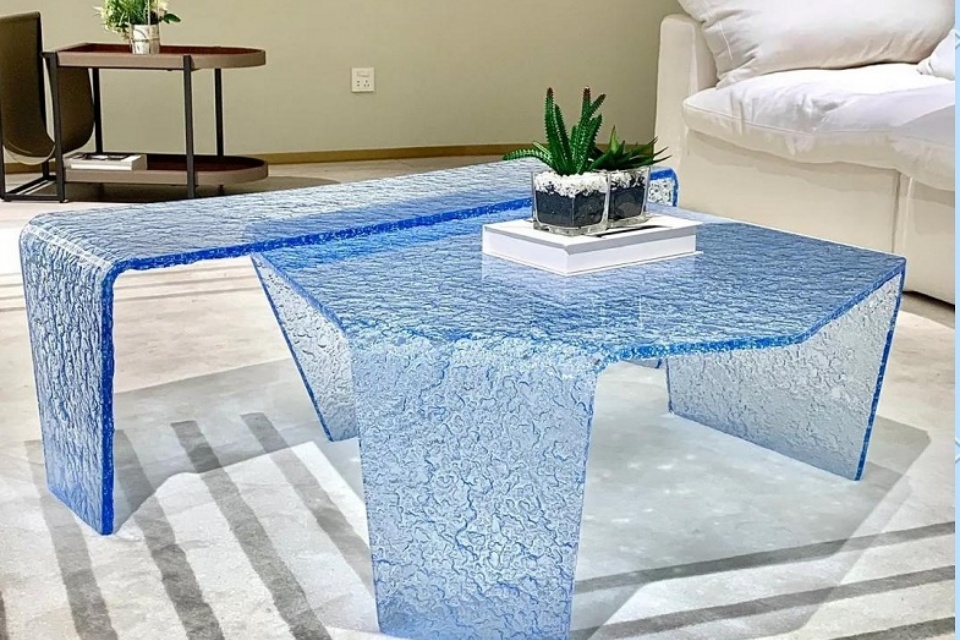
Popular Design Trends
Acrylic and Mixed Materials
In recent years, acrylic furniture has seen a resurgence, driven by a combination of sustainability and innovative design principles. Designers are increasingly exploring mixed materials, pairing acrylic with wood, metal, or fabric to create rich, dimensional aesthetics that enhance both functionality and visual appeal. This trend reflects a broader movement toward integrating diverse textures and materials in interior design, making spaces more inviting and dynamic.
Minimalism and Functionality
The minimalist aesthetic continues to dominate the design landscape, emphasizing simplicity, clean lines, and geometric purity. This approach not only prioritizes uncluttered designs but also aligns well with sustainable practices by encouraging the use of high-quality, long-lasting materials. Minimalism is often characterized by a monochromatic palette, where furniture pieces are designed to recede rather than dominate the space, thus creating a serene environment.
Retro and Nostalgic Elements
Incorporating retro elements, particularly from mid-century modern design, is a key trend influencing contemporary acrylic furniture. Pieces designed in this style often celebrate the innovative use of materials like molded plywood and fiberglass, reminiscent of iconic designs from the 1940s to 1960s. For instance, the Tulip Chair by Eero Saarinen exemplifies how acrylic and plastic can be utilized to create sculptural forms that remain relevant today. This nostalgic approach appeals to consumers’ desire for unique, character-rich furnishings that evoke a sense of history and craftsmanship.
Sustainable Practices
Sustainability has become a crucial consideration in design, driving trends towards eco-friendly materials and production methods. Modern acrylic furniture trends reflect this shift, with an emphasis on durability and timeless design, encouraging consumers to invest in pieces that will last and potentially become heirlooms. The integration of sustainable practices into the design process is influencing how designers approach the creation of acrylic furniture, leading to innovative solutions that respect both form and environmental impact.
Innovative Upholstery Techniques
Advancements in upholstery techniques have also shaped contemporary acrylic furniture design. Designers are experimenting with a variety of fabrics and textures, enhancing the visual and tactile qualities of acrylic pieces. This evolution allows for functional furniture that is not only striking in appearance but also comfortable and inviting. By balancing the modernist emphasis on simplicity with rich textures, designers are creating acrylic furniture that resonates with a broader audience while maintaining its stylish appeal.
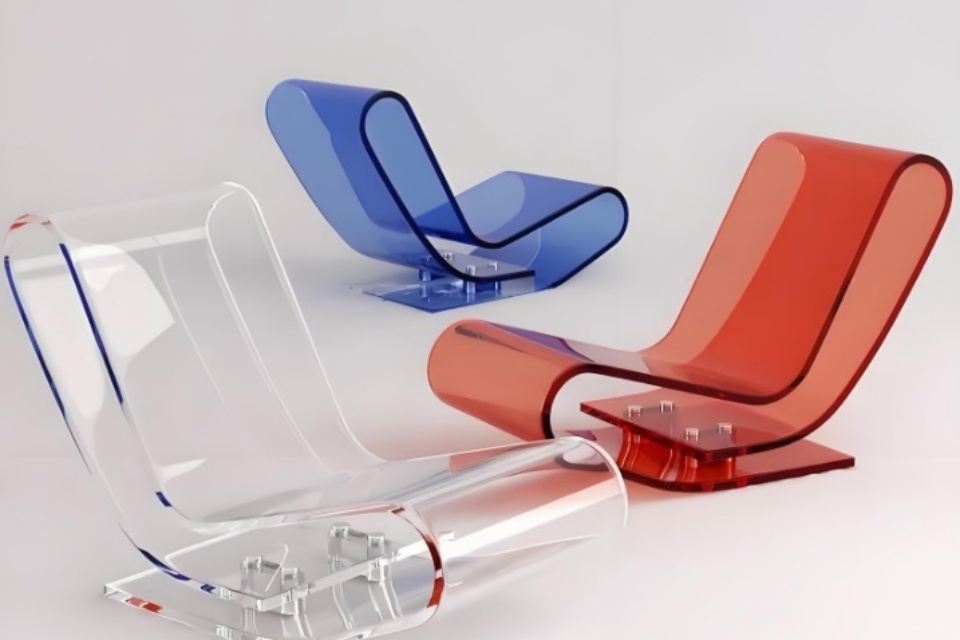
Notable Brands and Manufacturers
Acrylic coffee tables have become increasingly popular due to their modern aesthetics and practicality, leading several brands and manufacturers to innovate within this space. Notable players in the market include both established names and emerging designers that push the boundaries of acrylic design.
Established Brands
Kartell
Kartell is renowned for its iconic plastic furniture and has made significant contributions to the acrylic furniture trend. Their designs often blend functionalism with playful forms, showcasing how acrylic can be both stylish and practical.
Philippe Starck
A celebrated designer, Philippe Starck has produced several pieces utilizing acrylic, exemplifying contemporary design trends. His works often feature sleek lines and a minimalist approach, making them sought after by design enthusiasts.
Vitra
Vitra is known for its commitment to high-quality materials and innovative design. Their acrylic pieces often reflect a combination of timeless style and modern sensibilities, appealing to a wide range of consumers.
Emerging Designers
Maison Margiela
Maison Margiela, a fashion house that also dabbles in furniture, offers unique acrylic coffee tables that reflect a distinctive artistic vision. Their designs often incorporate unconventional shapes and textures, pushing the envelope of traditional table aesthetics.
Zaha Hadid Design
Zaha Hadid’s design studio has ventured into furniture design, creating striking acrylic pieces characterized by fluid forms and organic shapes. Their work represents the intersection of art and functionality, appealing to a contemporary audience looking for standout pieces.
Niche Manufacturers
CB2
CB2, a sister brand to Crate and Barrel, has embraced the acrylic trend with a range of affordable yet stylish coffee tables. Their designs are often infused with modern flair, making them accessible to a younger demographic seeking chic home decor.
West Elm
West Elm has introduced several acrylic accent tables that emphasize sustainability and modern design. They focus on clean lines and versatile forms, catering to the current trend of multifunctional furniture for small spaces.
Care and Maintenance
Acrylic furniture, particularly coffee tables, requires specific care to maintain its clarity and aesthetic appeal. Proper maintenance involves avoiding scratches, preventing deformation, and ensuring protection from sunlight.
Cleaning Acrylic Surfaces
To keep acrylic surfaces clean, it is essential to start by dusting with a soft microfiber cloth to remove dirt and grit, preventing scratches before cleaning begins. When cleaning, use a mild, pH-neutral soap mixed with warm water and apply it with a damp microfiber cloth, moving in gentle, straight lines. For a polished finish, specialized acrylic cleaners like Novus or LUCASOL can be used, as they effectively clean without scratching and help retain shine. Avoid ammonia-based cleaners and harsh chemicals, as these can cause cloudiness or cracks in the acrylic surface.
Preventing Scratches
Acrylic can easily be scratched, so implementing protective measures is vital. Use coasters and mats for drinks and hot dishes, and place felt pads under hard or metal objects to prevent damage. It is important to lift items instead of sliding them across the surface and to keep sharp objects away from the table. Regularly dusting with a microfiber cloth helps mitigate scratches by removing debris that could cause abrasions.
Long-Term Care
To ensure the longevity of your acrylic furniture, keep it out of direct sunlight to prevent yellowing and degradation from UV exposure. If storing the table, cover it with a soft cloth to protect it from dust and scratches. Additionally, regular cleaning and polishing with appropriate products can maintain its appearance over the years. For any small scratches that may occur, a plastic polish kit designed for acrylic can be used, while deeper scratches may require professional assistance. By adhering to these care and maintenance guidelines, your acrylic coffee table can remain a vibrant and functional centerpiece in your living space for years to come.
Environmental Considerations
When considering the environmental impact of coffee tables, both acrylic and glass options present unique aspects worth evaluating. Glass, often seen as a more luxurious material, has the advantage of being recyclable indefinitely without degradation in quality, making it an environmentally friendly choice for those prioritizing sustainability in their decor choices. This characteristic allows glass tables to be repurposed into new products, reducing waste and the demand for new raw materials. On the other hand, acrylic, while less favorable in terms of biodegradability, can still play a role in sustainable practices. Acrylic can be mechanically recycled or converted into fuel, although the latter process is not as commonly practiced. As acrylic becomes a prominent choice for trendy furniture, understanding its lifecycle and disposal options is essential for environmentally conscious consumers. The rise of acrylic as a favored material in modern design stems from its unique physical properties, including its high impact resistance and transparency comparable to glass. However, the production of acrylic, derived from natural gas, poses its own environmental challenges. As the demand for acrylic products grows, it is crucial for manufacturers and consumers alike to consider the ecological footprint of this versatile material. Balancing aesthetics, functionality, and environmental impact will guide consumers in making informed decisions when selecting coffee tables and accent pieces for their homes.


